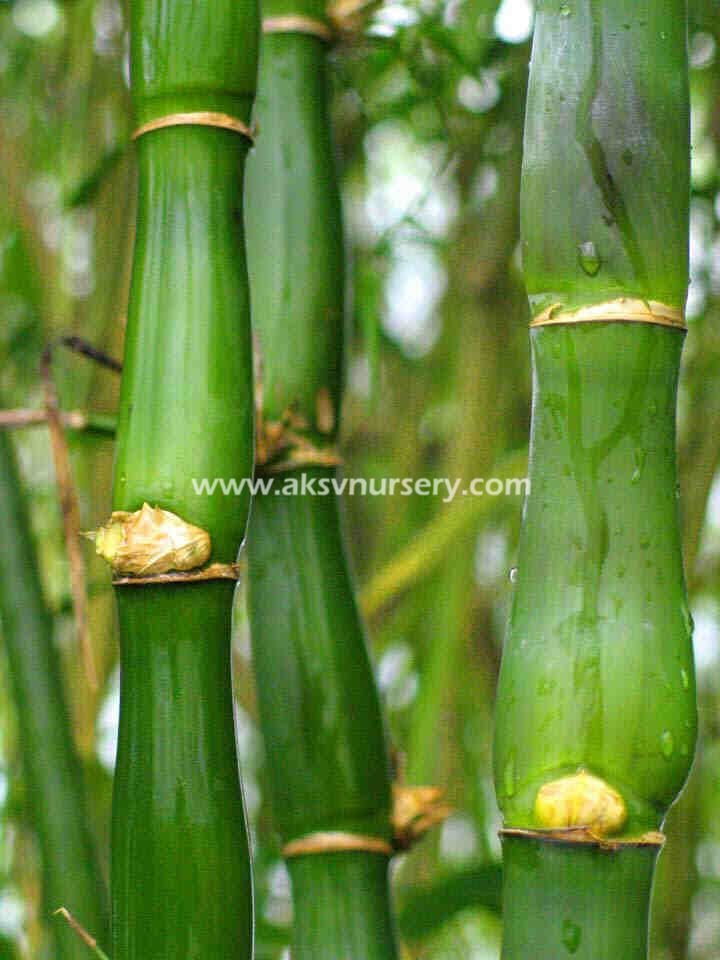Bambusa ventricosa
Family: Family: Poaceae / Gramineae
Bamboo Buddha Belly
Origin: China
Bamboo is one the most fast growing plant. This particular species is probably the fastest. It also has interesting swollen internodes which especially form when in pots or stressed. The plant creates large vase-shaped privacy screen, great for wind and cold protection. Height: 30-50 ft, diameter: 1.5 – 3 in. Variety Buddha Belly ‘Kimmei’ has golden yellow, green striped culms. Birds like to nest in bamboo. It is difficult for many predators to climb in. Cold hardy to 18F.
The following conditions must be met in order for the successful growth of your newly purchased bamboo: sunlight, regular irrigation, good drainage and at least occasional fertilization. To make sure your bamboo gets a healthy start after it is planted, diligent watering is a must. Bamboo must have enough water on a daily basis for at least the first month after planting. The most important part of your bamboo plant is under ground. If the rhizome and root system are planted in muck or boggy conditions it will not survive. Soils which are sandy and drain well are the best. Bamboo should be fertilized with a palm fertilizer. The added micro-nutrients and iron are good for preventing yellowing of bamboo foliage. Weed and feed fertilizers should never be used on bamboo. Heavy mulch is helpful to place around the base of the plants. Horse or cow manure is recommended as the best growing media. If you wish to thin your bamboo you can remove some of the older growth after the second year. Make sure to take no more than 1/3 of the culms. To trim your bamboo cut the culms near the base just above the node. It is not good to remove the newest culms unless they are growing into an unwanted area. If you are planning on using bamboo for a hedge, windbreak or natural screen the spacing is an important detail. Depending on the species and density of the plant they should be planted anywhere from 3 to 5 feet of center.



